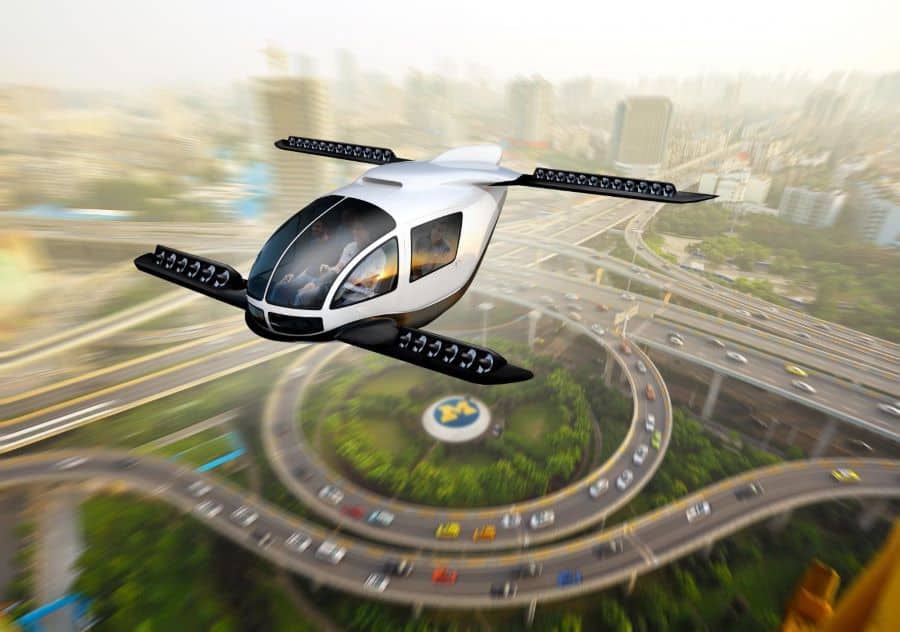
Compiled by researchers at the University of Michigan in partnership with Ford Motor Company, the study looked at the primary energy use and greenhouse gas emissions during the five phases of VTOL flight: takeoff, climb, cruise, descent and landing. As VTOLs use the bulk of their energy during takeoff and climb, they are less efficient over shorter distances, needing a sustained period of low-energy cruise to deliver gains.
During trips of 100km, for example, it was found that a VTOL carrying a pilot and three passengers had lower greenhouse gas emissions than ground-based cars, which have an average vehicle occupancy of 1.54. According to the research, published in Nature Communications, emissions tied to the VTOL were 52 per cent lower than petrol-powered cars and 6 per cent lower than battery-electric cars.
"To me, it was very surprising to see that VTOLs were competitive with regard to energy use and greenhouse gas emissions in certain scenarios," said Gregory Keoleian, senior author of the study and director of the Centre for Sustainable Systems at U-M's School for Environment and Sustainability.
"VTOLs with full occupancy could outperform ground-based cars for trips from San Francisco to San Jose or from Detroit to Cleveland, for example."
Akshat Kasliwal, first author of the study and a graduate student at the Michigan School for Environment and Sustainability, said the findings can help guide the sustainable deployment of an emerging mobility system prior to its commercialisation.
"With these VTOLs, there is an opportunity to mutually align the sustainability and business cases," Kasliwal said. "Not only is high passenger occupancy better for emissions, it also favours the economics of flying cars. Further, consumers could be incentivised to share trips, given the significant time savings from flying versus driving."
To build their physics-based energy and emissions model, the researchers used publicly available information from sources such as Airbus, Boeing, NASA and other organisations that have designed VTOL prototypes.
"Our model represents general trends in the VTOL space and uses parameters from multiple studies and aircraft designs to specify weight, lift-to-drag ratio and battery-specific energy," said Noah Furbush, study co-author and a master's student at the U-M College of Engineering.
"In addition, we conducted sensitivity analyses to explore the bounds of these parameters, alongside other factors such as grid carbon intensity and wind speed."




Poll: Should the UK’s railways be renationalised?
Rail passenger numbers declined from 1.27 million in 1946 to 735,000 in 1994 a fall of 42% over 49 years. In 2019 the last pre-Covid year the number...